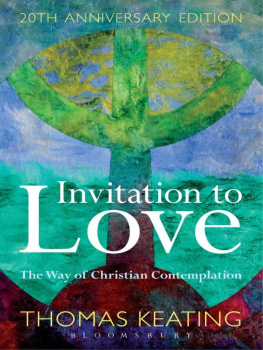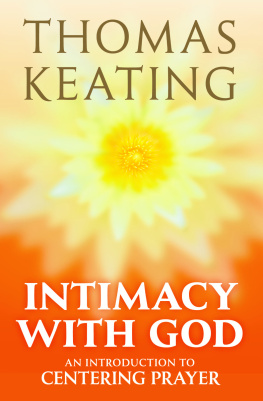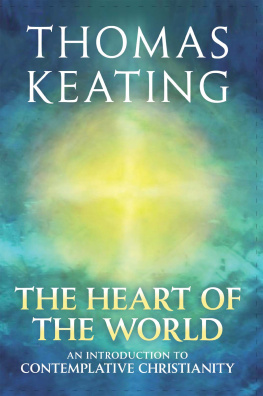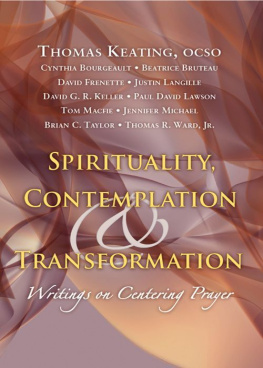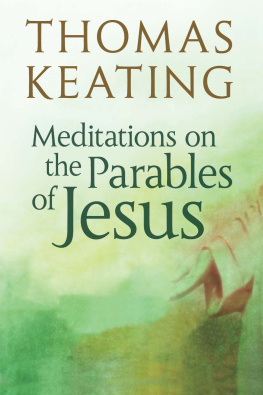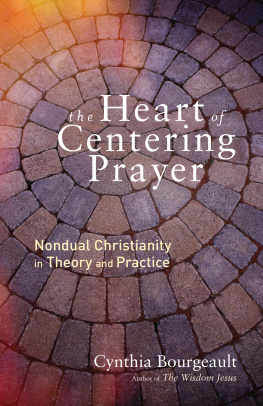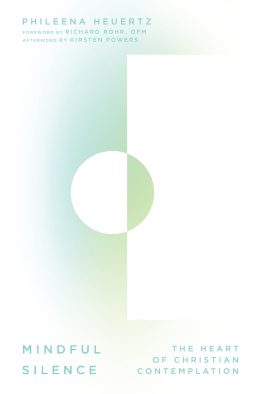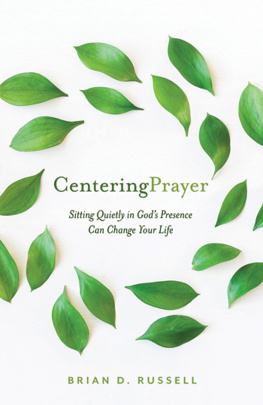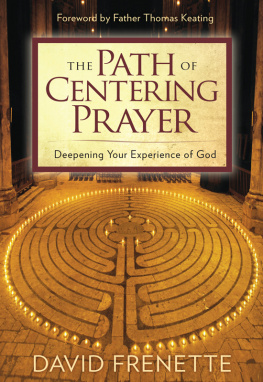Invitation to Love
BY THE SAME AUTHOR
Open Mind, Open Heart
The Mystery of Christ
The Heart of the World
Awakenings
Reawakenings
Crisis of Faith, Crisis of Love
Intimacy with God
Daily Reader for Contemplative Living
Invitation to
Love
The Way of
Christian Contemplation
20th Anniversary Edition
Thomas Keating

First published in Great Britain 2011
Copyright St Benedicts Monastery, 1992, 2012
The moral right of the author has been asserted
No part of this book may be used or reproduced in any manner whatsoever without written permission from the Publisher except in the case of brief quotations embodied in critical articles or reviews. Every reasonable effort has been made to trace copyright holders of material reproduced in this book, but if any have been inadvertently overlooked the Publishers would be glad to hear from them.
Bloomsbury Publishing Plc
50 Bedford Square
London WC1B 3DP
www.bloomsbury.com
Bloomsbury Publishing, London, Berlin, New York and Sydney
A CIP record for this book is available from the British Library.
ISBN 978 1 4411 8044 5
10 9 8 7 6 5 4 3 2 1

Contents

Acknowledgments
T his book is the fruit of not only my experience, but of Contemplative Outreach, Ltd., a network of faith communities seeking to recover and to assimilate the contemplative dimension of the gospel and to share it with others. The insights offered here have been refined by reflection, dialogue, and, above all, by the common experience of an increasing number of persons practicing since 1975. Thus, the book is an approximation of where we are now in our understanding of the Christian spiritual journey as a life process.
I must first of all thank the monastic community of St. Benedicts, Snowmass, Colorado, and especially its remarkable abbot, Father Joseph Boyle, OCSO, who have supported this work and welcomed the intensive retreats as one facet of their generous hospitality.
I thank the members of Chrysalis House, our lay contemplative community in Warwick, N.Y., who incarnated the vision of Contemplative Outreach in visible form for the eleven years of the service; the National Faculty of Contemplative Outreach, who share responsibility for developing resources and training presenters of Centering Prayer and intensive retreats; our National Board of Directors and Advisors over twenty-two years, especially its President, Gail Fitzpatrick Hopler; the Coordinators of some one hundred and twenty regions around this country and overseas, especially the Philippines, England, Central Africa, the Dominican Republic and South Africa; and the local support groups that meet together weekly and in regional or national conferences every year. This ever-widening network of persons dedicated to the spiritual journey in the Christian tradition is forming a vast reservoir of the lived experience of contemplative prayer and of its application to daily life.
My heartfelt gratitude goes to the persons who staff the intensive retreats held monthly at the guest facilities at the Snowmass monastery. Our staff enables retreatants to enter at once into an ongoing contemplative community whose practice is unstinting service. During these retreats the material in this book has been discussed and lived by many sincere retreatants, with our staff serving as examples and guides to its meaning and practice.
My special thanks go to Judith Clark who worked with me over a period of three years to arrange the basic ideas and various parts of this book. The final format I owe to Cynthia Bourgeault, without whose editing skills I could not have brought the manuscript to its final form. The devoted secretarial services of Patricia Johnson and Bonnie Shimizu have also made a substantial contribution.
Introduction
T his book is the result of an ongoing effort to re-present the Christian spiritual path in a way that is accessible to contemporary followers of Christ. During the first sixteen centuries of the Churchs history, contemplative prayer was the acknowledged goal of Christian spirituality for clergy and laity alike. After the Reformation this heritage, at least as a living tradition, was virtually lost. The recovery of the Christian contemplative tradition began in the twentieth century and it continues now, twenty years after the original publication of this book.
Throughout the early 1970s, a small group of Trappist monks at St. Josephs Abbey, Spencer, Massachusetts, were reflecting on how they might contribute to this renewal. In 1975 the contemplative practice called Centering Prayer, based on the fourteenth-century classic The Cloud of Unknowing, was developed by Father William Meninger and offered at the guest house in Spencer to priest retreatants. A year later he made a series of audio tapes, which continues to be popular even to this day. The response to the method was so positive that introductory workshops were instituted on a regular basis and made available to everyone. Father Basil Pennington joined in this work and extended the introductory workshops to an ever-widening circle of places and persons.
In 1981, I resigned as abbot of St. Josephs and moved to St. Benedicts Monastery, Snowmass, Colorado. The idea of a more intensive experience of Centering Prayer began to surface. In 1983, the first Intensive Centering Prayer Retreat was held at the Lama Foundation, San Cristobal, New Mexico. Since then, Intensives have been given at St. Benedicts Monastery and in other locations.
A number of weekly support groups grew up in various areas of the country, and the need to organize became evident. In 1984, Contemplative Outreach, Ltd. was established to coordinate efforts to introduce Centering Prayer to persons seeking a deeper life of prayer and to provide support systems and ongoing training opportunities capable of sustaining their commitment. Continuing practice also created the need for a more comprehensive conceptual background in order to understand the practice and to integrate its effects into daily life.
In the Christian tradition, contemplative prayer has never been a privatized spiritual experience in the service of altered states of consciousness or self-actualization. With the spiritual thirst awakened through encounter with Gods presence during Centering Prayer periods, the need became more insistent for a representation of the classic Christian spiritual path in a way consistent with contemporary sciences, in particular, the insights of modern psychology.
It is my conviction that the language of psychology is an essential vehicle in our time to explain the healing of the unconscious effected during the dark nights which Saint John of the Cross describes. For one thing, it is a language that is better understood than the traditional language of spiritual theology, at least in the Western world. It also provides a more comprehensive understanding of the psychological dynamics which grace has to contend with in the healing and transforming process.

